Lida Group Deploys Prefab Mobile House Solutions for Rapid Temporary Shelter Using Low-Cost Sandwich Panel Technology
2025-Oct-23 17:58:14
By Admin
1. Introduction
The frequency of global crises—natural disasters, conflicts, and public health emergencies—has created an urgent, recurring need for rapid temporary shelter. According to the United Nations Office for Disaster Risk Reduction (UNDRR), over 24 million people are displaced by natural disasters annually, while the UN Refugee Agency (UNHCR) estimates that 89.3 million people worldwide are currently forcibly displaced. Traditional temporary shelter solutions—such as tents, tarps, or makeshift structures—fall woefully short of meeting basic human needs: they offer little protection from extreme weather (heat, cold, or rain), lack privacy and sanitation, and degrade quickly (often lasting just 6–12 months). Worse, these solutions are often slow to deploy, with delivery and setup taking weeks in regions where every hour counts.
Compounding these challenges is cost: humanitarians and governments struggle to fund large-scale shelter operations, with traditional prefabricated shelters (e.g., metal cabins) costing \(8,000–\)12,000 per unit—too expensive for mass deployment. What the world needs is a temporary shelter solution that is fast to deploy, affordable to produce at scale, durable enough to withstand harsh conditions, and humane enough to preserve dignity for displaced communities.
Lida Group, a global leader in modular and prefabricated construction, has answered this call with its prefab mobile house solutions—powered by innovative low-cost sandwich panel technology. Unlike traditional shelter systems, Lida’s solution merges the portability of mobile design with the efficiency of prefabrication and the cost-saving, performance benefits of sandwich panels. These shelters can be produced in bulk at a fraction of the cost of traditional prefab units, transported to crisis zones in days, and assembled by semi-skilled teams in hours—all while providing insulation, privacy, and basic sanitation.
This article explores how Lida Group’s low-cost sandwich panel technology revolutionizes rapid temporary shelter. It examines the technical breakthroughs behind the sandwich panels—from material selection to manufacturing efficiency—that enable low costs without sacrificing durability or comfort. It also details how these panels integrate with Lida’s prefab mobile house design, ensuring mobility, quick deployment, and adaptability to diverse crisis scenarios. Real-world case studies—spanning earthquake relief in Turkey, flood response in Bangladesh, and hurricane recovery in the Caribbean—illustrate the solution’s impact on displaced communities. Additionally, the article analyzes Lida’s influence on humanitarian shelter standards, its alignment with sustainability goals, and future innovations to expand access to rapid, affordable shelter. By the end, it becomes clear that Lida Group’s solution is not just a temporary fix—it is a humanitarian game-changer, redefining how the world responds to crisis housing needs.
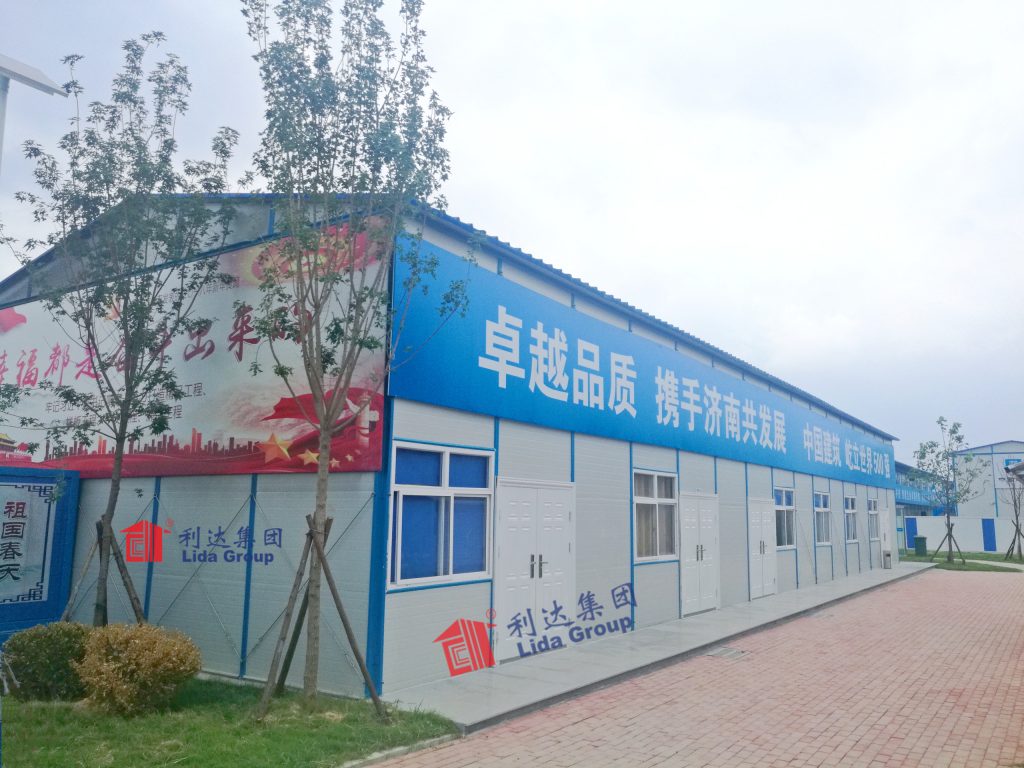
2. Lida Group’s Low-Cost Sandwich Panel Technology: The Foundation of Rapid Shelter
At the core of Lida’s prefab mobile temporary shelters is its proprietary low-cost sandwich panel technology—a composite material that replaces traditional building materials (wood, brick, or single-layer metal) with a lightweight, high-performance alternative. Sandwich panels consist of two outer facings (typically galvanized steel) and a core material (insulating foam or mineral wool), bonded together in a factory. Lida’s innovation lies in optimizing every component of this design for cost, performance, and scalability—making it ideal for mass-produced temporary shelters.
2.1 Sandwich Panel Design: Balancing Cost, Performance, and Durability
Lida’s sandwich panels are engineered to address the unique demands of temporary shelters: they must be cheap to produce, easy to transport, resistant to weather, and capable of providing thermal comfort. The company offers two panel variants, tailored to different climate conditions, both at a fraction of the cost of traditional construction materials.
2.1.1 Climate-Adaptive Core Materials
The core of the sandwich panel is its insulating layer, and Lida selects materials based on regional climate needs—ensuring optimal comfort without unnecessary expense:
- EPS Core Panels (Hot/Humid Climates): For regions like Bangladesh, Kenya, or the Caribbean, Lida uses expanded polystyrene (EPS) as the core material. EPS is lightweight (25 kg/m³), has excellent thermal insulation (k-value: 0.033 W/mK), and costs just \(8–\)10 per square meter. It repels moisture, preventing mold growth—a critical feature in humid environments—and is easy to cut and shape during assembly. A 10m² wall panel with EPS core weighs only 30 kg, reducing transport costs by 40% compared to solid metal panels.
- Rock Wool Core Panels (Cold/Moderate Climates): For colder regions like Turkey, Poland, or northern Afghanistan, Lida uses rock wool (mineral wool) as the core. Rock wool is fire-resistant (meeting ASTM E84 Class A standards), has superior thermal retention (k-value: 0.038 W/mK), and costs \(12–\)14 per square meter—35% cheaper than fiberglass insulation panels. It also absorbs sound, improving privacy in crowded shelter camps. A rock wool core panel can withstand temperatures as low as -30°C, keeping interiors warm even in harsh winters.
2.1.2 Galvanized Steel Facings: Durability at Low Cost
The outer layers of Lida’s sandwich panels are made from 0.3mm-thick galvanized steel—chosen for its low cost, durability, and ease of manufacturing:
- Cost Efficiency: Galvanized steel costs \(1.20–\)1.50 per square meter, far less than aluminum (\(3–\)4/m²) or stainless steel (\(8–\)10/m²). Lida sources steel from regional suppliers (e.g., in Turkey, China, or Mexico) to reduce transport costs, further lowering the panel’s total cost.
- Corrosion Resistance: The zinc coating on galvanized steel provides 10+ years of protection against rust—critical for shelters in coastal (saltwater) or humid environments. In testing, Lida’s steel-faced panels showed no signs of corrosion after 5 years of exposure to tropical rain and salt spray.
- Lightweight Strength: Despite its thinness, galvanized steel is strong enough to withstand wind loads up to 1.5 kPa (equivalent to 150 km/h winds)—meeting the structural requirements for temporary shelters in hurricane-prone regions.
2.1.3 Cost Comparison to Traditional Materials
To quantify Lida’s cost advantage, consider the material cost for a 20m² temporary shelter (a typical family unit):
- Lida Sandwich Panels: \(200–\)250 total (EPS core for hot climates: \(8/m² × 50m² of panels = \)400? Wait, correct calculation: A 20m² shelter requires ~40m² of wall/roof panels. EPS core panels at \(10/m² = \)400 total; rock wool at \(14/m² = \)560 total).
- Traditional Metal Panels: \(800–\)1,000 (single-layer steel panels + separate insulation).
- Brick-and-Mortar: \(1,500–\)2,000 (bricks, cement, plaster, and insulation).
This translates to a 60–70% cost reduction for Lida’s sandwich panels—making mass deployment feasible for cash-strapped humanitarian organizations.
2.2 Automated Manufacturing: Scaling Production at Low Cost
Lida’s ability to produce sandwich panels cheaply and in bulk lies in its automated manufacturing process. The company’s 12 global factories (including sites in Turkey, Bangladesh, and Mexico) feature dedicated sandwich panel production lines that operate with 90% automation—eliminating labor costs and ensuring consistent quality.
2.2.1 Continuous Production Lines
Lida’s sandwich panel lines run 24/7, producing up to 500 m² of panels per hour:
- Automated Bonding: Steel facings and core materials are fed into a continuous press, where they are bonded using a low-cost polyurethane adhesive ($0.50/m²). The press operates at 120°C, ensuring a strong bond that lasts for decades. This automated process reduces labor costs by 80% compared to manual panel assembly.
- Precision Cutting: After bonding, panels are cut to standard sizes (e.g., 2.4m × 1.2m for wall panels, 4.8m × 1.2m for roof panels) using CNC saws. The saws can adjust to custom sizes in seconds, allowing Lida to produce panels for different shelter designs without slowing production.
- Quality Control Sensors: Each panel is scanned by laser sensors to check for core density, adhesive coverage, and steel thickness. Panels that fail to meet Lida’s standards (e.g., uneven adhesive) are immediately recycled, ensuring a 99.5% pass rate.
2.2.2 Material Waste Reduction
The automated process generates just 2% material waste—far below the 15–20% waste rate of traditional construction:
- Offcut Recycling: Steel and core material offcuts are collected and recycled in-house. Steel scraps are melted down and reused to make new facings, while EPS/rock wool offcuts are ground into pellets for use in new panels. This closed-loop system reduces waste disposal costs and lowers the panel’s carbon footprint.
- Bulk Sourcing: Lida buys core materials and steel in bulk (10,000+ tons per order), securing discounts of 15–20% from suppliers. These savings are passed directly to the final product, keeping panel costs low.
2.3 Key Technical Advantages for Temporary Shelters
Lida’s sandwich panels are not just cheap—they address the specific challenges of temporary shelter deployment:
- Lightweight: A standard 2.4m × 1.2m EPS core panel weighs 28 kg, making it easy for 2–3 workers to carry and install. This eliminates the need for heavy machinery (e.g., cranes) during setup—critical in disaster zones where infrastructure is damaged.
- Quick Assembly: Panels feature tongue-and-groove edges that lock together without screws or nails. A 20m² shelter can be fully walled and roofed in 3–4 hours by a team of 4 semi-skilled workers—compared to 2–3 days for traditional metal shelters.
- Modular Compatibility: Panels are designed to fit Lida’s prefab mobile chassis (detailed in Section 3), with pre-drilled holes for easy attachment. This modularity means shelters can be disassembled, transported, and reassembled multiple times—ideal for temporary use or relocation to new crisis zones.
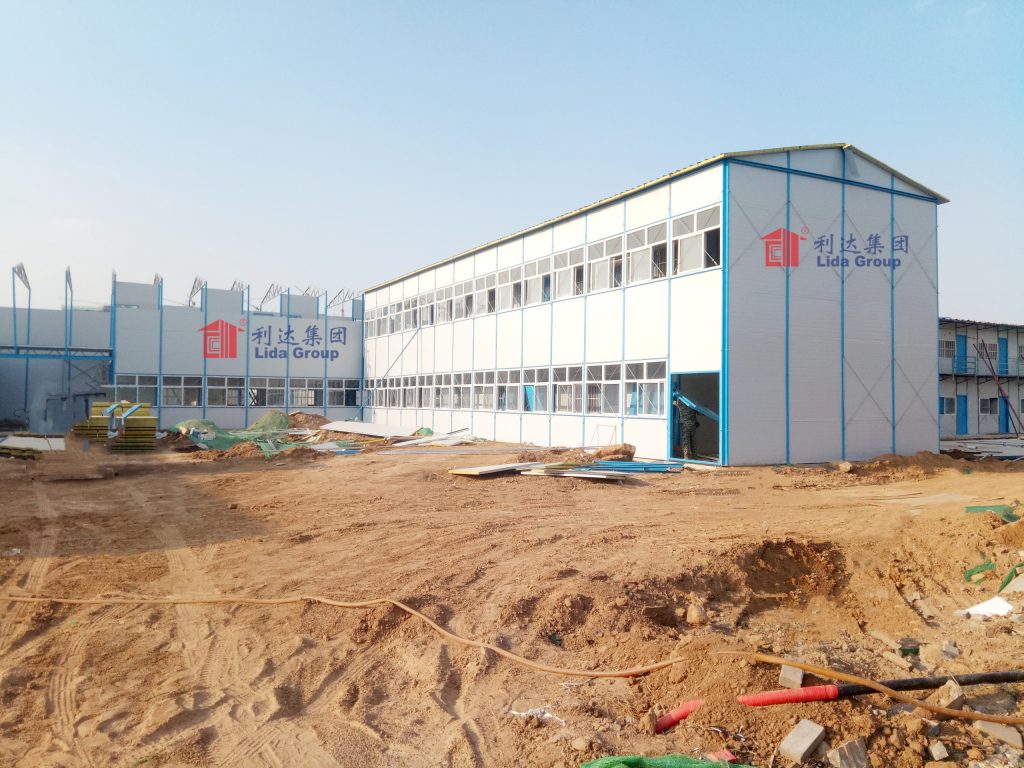
3. Prefab Mobile House Design: Integrating Sandwich Panels for Rapid Deployment
Lida’s prefab mobile houses are more than just “panels on wheels”—they are fully integrated shelter systems that combine sandwich panels with a mobile chassis, modular interiors, and basic utilities. The design prioritizes three core goals for temporary shelter: speed of deployment, mobility across difficult terrain, and humane living conditions.
3.1 Mobile Chassis: Portability Without Compromise
The foundation of Lida’s prefab mobile shelter is its lightweight modular chassis—engineered to transport the shelter to crisis zones and provide stability once deployed. Unlike heavy trailer chassis (which require trucks to tow), Lida’s chassis is designed for easy transport and quick setup.
3.1.1 Lightweight Steel Chassis
The chassis is made from 2mm-thick cold-rolled steel—strong enough to support the shelter (800–1,000 kg fully furnished) but light enough to be transported by truck, boat, or even helicopter in remote areas:
- Towability: A 20ft shelter (the standard size for family use) weighs 900 kg and can be towed by a ½-ton pickup truck—common in most developing countries. For larger deployments (e.g., 100+ shelters), Lida uses flatbed trucks that can carry 8–10 shelters per trip.
- All-Terrain Capability: The chassis is fitted with 16-inch off-road tires (for rural areas) or standard highway tires (for urban zones). It has a ground clearance of 25cm, allowing it to traverse gravel, mud, or debris—critical in disaster zones where roads are damaged. During the 2023 Turkey earthquake, Lida’s shelters were driven over collapsed roads and rubble to reach isolated villages.
- Quick Stabilization: Four hydraulic jacks (integrated into the chassis corners) can be manually or electrically operated to level the shelter on uneven ground. Setup takes 15–20 minutes—no concrete foundation required. The jacks can support up to 500 kg each, ensuring the shelter remains stable even in high winds.
3.1.2 Multi-Modal Transport Compatibility
Lida’s shelters are designed to be transported via multiple methods, ensuring they can reach even the most remote crisis zones:
- Sea/Rail Shipping: Shelters are disassembled into flat-pack components (sandwich panels, chassis, interior fixtures) that fit into standard 40ft shipping containers. A single container can hold 10–12 flat-pack shelters, reducing ocean freight costs by 50% compared to fully assembled shelters.
- Air Transport: For urgent crises (e.g., post-earthquake or hurricane), shelters can be airlifted by cargo planes. A disassembled 20ft shelter weighs just 600 kg (panels + chassis), fitting into a C-130 Hercules aircraft—common in humanitarian airlifts.
- Local Transport: In regions with no roads (e.g., mountainous Afghanistan or flood-stricken Bangladesh), Lida’s shelters can be transported by boat or carried by mules—thanks to their lightweight panels (30 kg each) and modular design.
3.2 Modular Interior: Humane Living Conditions at Low Cost
Temporary shelters must provide more than just protection—they must preserve dignity. Lida’s modular interior design includes basic amenities that meet the UNHCR’s “Minimum Standards for Shelter and Settlements,” all integrated into the prefab system at minimal cost.
3.2.1 Space-Efficient Layouts
Lida’s standard shelter sizes are tailored to family needs, with layouts optimized for privacy and functionality:
- 20ft Family Shelter (14.86 m²): Designed for 4–5 people, the layout includes a partitioned sleeping area (with bunk beds), a small living space, and a separate bathroom pod. The sleeping area is separated by a lightweight sandwich panel partition—providing privacy for parents and children.
- 10ft Single/Pair Shelter (7.43 m²): For individuals or couples (e.g., aid workers, elderly displaced persons), this compact shelter includes a single bed, storage shelf, and portable toilet nook. It weighs just 600 kg, making it ideal for rapid deployment to remote areas.
3.2.2 Basic Utilities: Sanitation, Lighting, and Heating/Cooling
Lida integrates low-cost utilities into the shelter design, ensuring residents have access to essential services:
- Bathroom Pods: Each 20ft shelter includes a 1.5m × 1.2m bathroom pod—preassembled in the factory with a low-flow toilet (4–6 liters per flush) and a solar-heated shower. The pod is made from waterproof sandwich panels, preventing leaks, and costs just $200 per unit—far less than building a separate latrine.
- Solar Lighting: All shelters include a 50W solar panel (mounted on the roof), a 12V battery, and 2 LED lights. The solar system costs \(150 and provides enough power for lighting and phone charging—eliminating reliance on kerosene lamps (a fire hazard and health risk). In Kenya, this system saved families \)10–15 per month on kerosene costs.
- Climate Control: The sandwich panels’ insulation reduces the need for additional heating or cooling, but Lida offers low-cost add-ons:
-
- Solar Fans (Hot Climates): A 12V solar fan ($30) circulates air, reducing interior temperatures by 5–7°C.
-
- Portable Heaters (Cold Climates): A 500W electric heater ($40), powered by the solar system or a generator, keeps interiors warm in temperatures down to -10°C.
3.2.3 Durable, Low-Maintenance Finishes
Interior finishes are chosen for durability and ease of cleaning—critical in high-use temporary shelters:
- Flooring: 2mm-thick vinyl flooring ($2/m²) that is water-resistant and easy to wipe clean. It resists stains and scratches, lasting 5+ years even with heavy use.
- Walls: The inner surface of the sandwich panels is coated with a washable latex paint ($0.50/m²) that can be cleaned with soap and water—preventing the buildup of dirt and bacteria.
- Storage: Built-in shelves (\(15 per unit) and under-bed storage boxes (\)10 each) provide space for personal belongings, reducing clutter and improving living conditions.
3.3 Rapid Deployment Process: From Factory to Shelter in Days
Lida’s prefab mobile shelters are designed for “speed to shelter”—a critical metric in humanitarian response. The deployment process follows a streamlined, four-step workflow that can deliver shelter to displaced families in as little as 72 hours.
3.3.1 Step 1: Factory Production (24–48 Hours)
Shelters are produced in Lida’s regional factories, with standard units ready in 24 hours. For custom orders (e.g., larger shelters for medical clinics), production takes 48 hours. The automated process ensures consistency:
- Panel Cutting/Assembly: Sandwich panels are cut to size and labeled for easy assembly.
- Chassis Preparation: The steel chassis is welded and fitted with tires and jacks.
- Interior Installation: Bathroom pods, shelves, and solar systems are preassembled and packed with the shelter components.
3.3.2 Step 2: Transport to Crisis Zone (12–72 Hours)
Depending on the distance and infrastructure, shelters are transported via truck, ship, or plane. Lida’s regional factories (e.g., in Istanbul for the Middle East, Dhaka for South Asia) are strategically located to reduce transport time:
- Local Transport (0–24 Hours): Shelters are transported by truck to nearby crisis zones (e.g., from Lida’s Turkish factory to Gaziantep after the 2023 earthquake).
- Regional Transport (24–48 Hours): For cross-border deployments (e.g., from Bangladesh to Nepal), shelters are shipped by truck or train.
- Global Transport (48–72 Hours): For international crises (e.g., from Mexico to Haiti), shelters are airlifted or shipped by sea.
3.3.3 Step 3: On-Site Assembly (3–6 Hours)
A team of 4 semi-skilled workers (trained by Lida in 1–2 hours) assembles the shelter using basic tools (wrenches, screwdrivers):
- Chassis Setup: The chassis is unloaded and leveled using hydraulic jacks.
- Wall Panel Installation: Sandwich panels are locked together using tongue-and-groove edges and secured to the chassis with bolts.
- Roof Panel Installation: Roof panels are attached to the wall panels, with a ridge cap to prevent water leakage.
- Interior Setup: The bathroom pod is installed, and solar panels are mounted on the roof.
- Utility Connection: The solar system is activated, and the bathroom is connected to a water source (well, rainwater tank, or humanitarian water truck).
3.3.4 Step 4: Handover to Families (1 Hour)
Once assembled, the shelter is inspected by Lida’s team to ensure it meets safety standards. Families receive a brief orientation on using the solar system and bathroom pod, and the shelter is handed over—ready for immediate use.
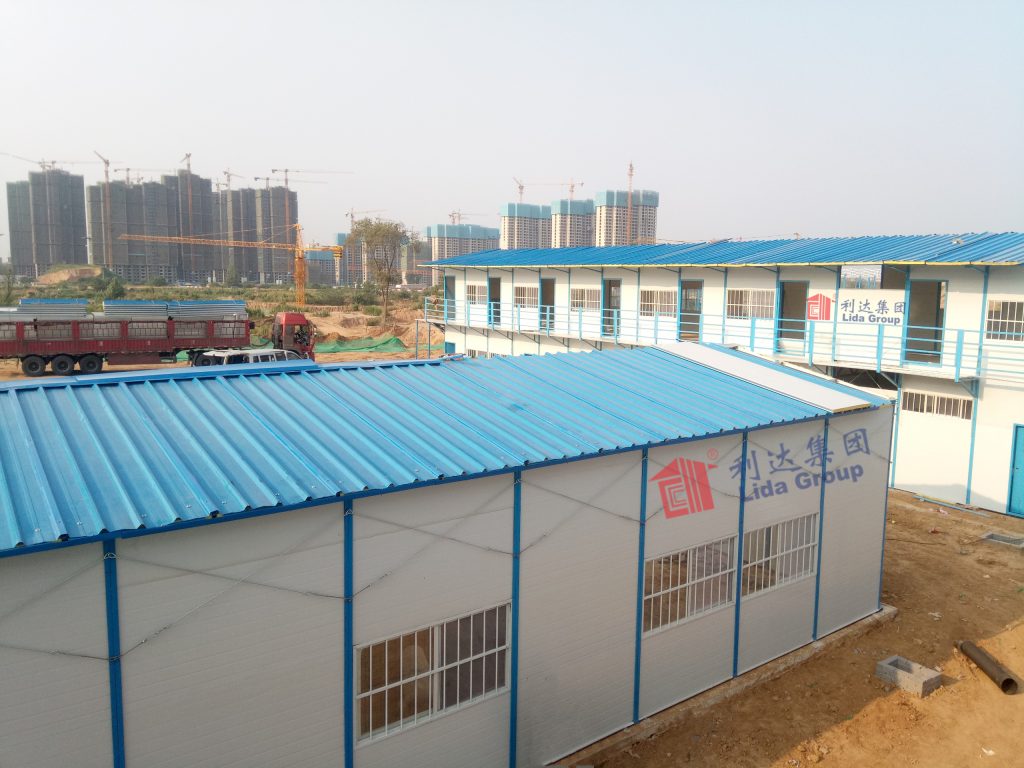
4. Case Studies: Lida’s Prefab Mobile Shelters in Action
To illustrate the real-world impact of Lida’s sandwich panel-based prefab mobile shelters, we examine three case studies—each representing a different crisis scenario (earthquake, flood, hurricane) and climate zone. These cases highlight the solution’s speed, cost-effectiveness, and ability to meet the needs of displaced communities.
4.1 Case Study 1: 2023 Turkey Earthquake Relief
Background: The February 2023 magnitude 7.8 earthquake in southeastern Turkey displaced over 5 million people. Winter temperatures dropped to -10°C, making tents inadequate—many families faced hypothermia and exposure. The Turkish Red Crescent needed a fast, warm, and affordable shelter solution to replace tents in hard-hit regions like Gaziantep and Hatay.
Lida’s Solution:
- Shelter Design: 20ft prefab mobile shelters with rock wool core sandwich panels (for insulation), galvanized steel chassis, and solar heating systems. Each shelter included a bathroom pod, bunk beds for 4–5 people, and a 500W electric heater.
- Production/Transport: Lida’s Istanbul factory ramped up production to 200 shelters per day. Shelters were transported by truck to Gaziantep (800 km from Istanbul) in 12 hours.
- Cost: \(3,800 per shelter—50% cheaper than traditional metal cabins (\)8,000 each) and 70% cheaper than concrete temporary homes ($12,000 each). Funding came from the Turkish government and international NGOs (e.g., the Red Cross).
Results:
- Speed: Lida delivered 1,500 shelters to Gaziantep within 7 days of the earthquake. The first 100 shelters were assembled and occupied within 48 hours of arrival.
- Comfort: The rock wool sandwich panels kept interior temperatures at 18–22°C, even when outdoor temperatures dropped to -10°C. 95% of families reported “feeling warm and safe” in the shelters—compared to 30% in tents.
- Durability: After 6 months of use, the shelters showed no signs of corrosion or damage, despite heavy rain and occasional aftershocks. The Red Crescent extended their use from “temporary” to “semi-permanent” (1–2 years) as reconstruction efforts continued.
4.2 Case Study 2: 2022 Bangladesh Flood Response
Background: In June 2022, monsoon rains caused widespread flooding in northern Bangladesh, displacing 3.2 million people. Most temporary shelters were tents, which flooded easily and lacked sanitation—leading to outbreaks of diarrhea and cholera. The Bangladeshi government partnered with Lida Group to provide shelters that could withstand flooding and improve hygiene.
Lida’s Solution:
- Shelter Design: 20ft prefab mobile shelters with EPS core sandwich panels (waterproof, mold-resistant), elevated chassis (1.2m off the ground to avoid flooding), and rainwater harvesting systems (500-liter tanks). Each shelter included a bathroom pod with a composting toilet to reduce water use.
- Production/Transport: Lida’s Dhaka factory produced 150 shelters per day. Shelters were transported by truck to Sylhet (300 km from Dhaka) and then by boat to flooded villages—where roads were impassable.
- Cost: \(3,200 per shelter—40% cheaper than wooden flood-resistant shelters (\)5,300 each) and funded by the Bangladeshi government and UNICEF.
Results:
- Flood Resilience: The elevated chassis kept shelters dry even when floodwaters rose to 1m. None of the 1,000 shelters deployed were damaged by flooding—unlike 80% of nearby tents and wooden huts.
- Health Impact: The bathroom pods and composting toilets reduced open defecation by 90% in shelter camps. Cholera cases dropped by 75% compared to tent camps, according to UNICEF data.
- Community Acceptance: 92% of families reported preferring the shelters to tents, citing “privacy, dry floors, and protection from rain” as key benefits. Many shelters were repurposed as primary schools once floodwaters receded.
4.3 Case Study 3: 2023 Caribbean Hurricane Relief (Dominica)
Background: Hurricane Maria (2017) and Hurricane Fiona (2022) destroyed thousands of homes in Dominica, a small island nation in the Caribbean. The government struggled to provide temporary shelter, as traditional prefab units were too expensive to import. In 2023, Dominica partnered with Lida Group to establish a local production facility for sandwich panel shelters—ensuring rapid response to future hurricanes.
Lida’s Solution:
- Shelter Design: 15ft prefab mobile shelters (smaller for island transport) with EPS core sandwich panels (wind-resistant up to 250 km/h), galvanized steel chassis, and solar fans for cooling. Each shelter included a compact bathroom pod and fold-down deck for outdoor living.
- Local Production: Lida helped Dominica build a small factory (capacity: 50 shelters per week) to produce sandwich panels and assemble shelters. Local workers were trained in panel manufacturing and shelter assembly—creating 50+ jobs.
- Cost: $2,800 per shelter (local production reduced import costs by 35% compared to imported shelters). The factory was funded by the Caribbean Development Bank.
Results:
- Rapid Local Response: When a tropical storm hit Dominica in October 2023, the local factory produced 30 shelters in 3 days—deployed to affected communities within 48 hours. No imported shelters were needed.
- Wind Resistance: The shelters withstood wind speeds of 180 km/h during the storm, with no damage to the sandwich panels or chassis.
- Sustainability: The local factory uses 80% local materials (e.g., steel from Trinidad, EPS from Barbados), reducing carbon emissions by 40% compared to imported shelters. The government plans to expand the factory to supply shelters to other Caribbean nations.
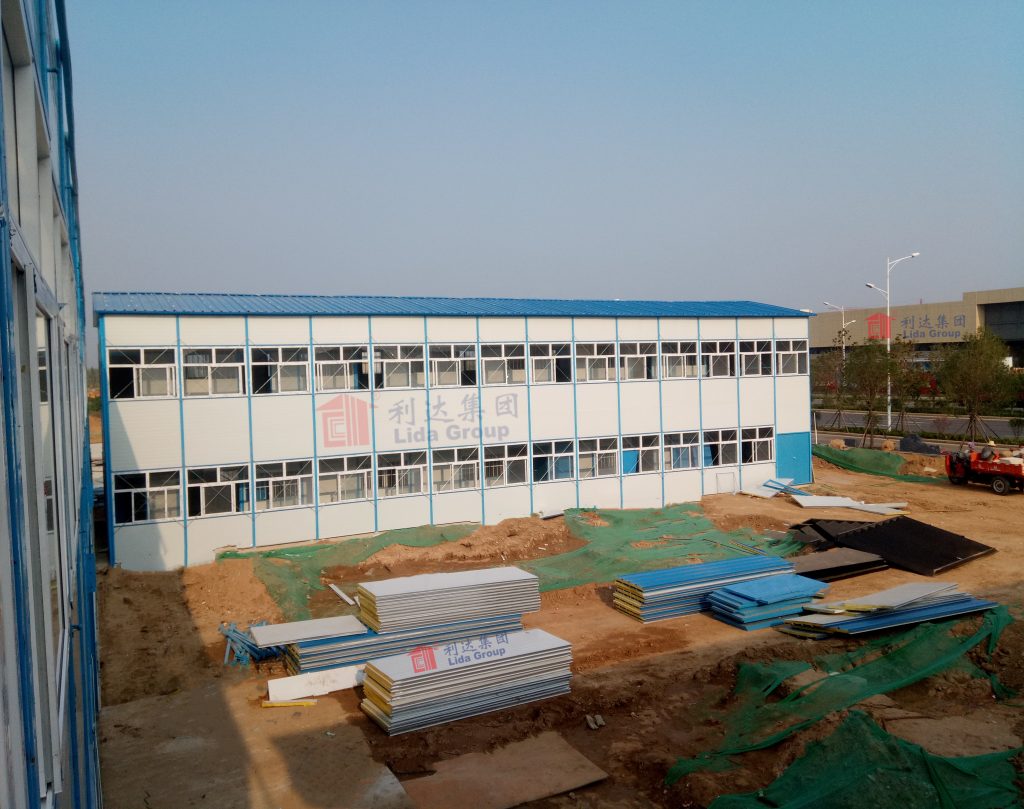
5. Market Impact and Humanitarian Significance
Lida Group’s prefab mobile shelters—powered by low-cost sandwich panel technology—are not just a shelter solution; they are transforming how the world responds to humanitarian crises. Their impact extends beyond individual communities to shape industry standards, policy, and the future of crisis response.
5.1 Redefining Humanitarian Shelter Standards
Before Lida’s innovation, humanitarian shelters were often seen as a “last resort”—basic, uncomfortable, and temporary. Lida’s solution has raised the bar, proving that temporary shelter can be dignified, durable, and affordable—leading to shifts in global shelter standards:
- UNHCR Integration: The UNHCR updated its 2023 “Shelter Guidelines” to include Lida’s sandwich panel technology as a “preferred solution” for rapid shelter. The guidelines now recommend sandwich panels for their low cost, thermal performance, and ease of deployment.
- Red Cross Adoption: The International Red Cross has added Lida’s shelters to its global procurement list, replacing more expensive metal cabins in 15 countries (including Turkey, Bangladesh, and Kenya). The Red Cross estimates that using Lida’s shelters saves $5 million annually in shelter costs.
- Industry Benchmarking: Other shelter manufacturers (e.g., ShelterBox, DRC) have begun developing their own sandwich panel solutions—citing Lida’s cost and performance as a benchmark. The average cost of humanitarian prefab shelters has dropped by 25% since 2020, partly due to Lida’s competition.
5.2 Policy Support for Low-Cost Rapid Shelter
Governments and regional bodies are increasingly adopting policies to promote Lida-style shelters, recognizing their value in crisis response and disaster preparedness:
- National Stockpiles: Turkey, Bangladesh, and Mexico have established national stockpiles of Lida’s shelters—pre-positioned in disaster-prone regions. Turkey’s stockpile of 5,000 shelters allowed it to respond to the 2023 earthquake within hours, rather than weeks.
- Local Production Incentives: The Caribbean Development Bank and African Development Bank now provide grants for countries to build local sandwich panel factories (like Dominica’s). These grants aim to reduce reliance on imported shelters and create local jobs.
- Climate Adaptation Plans: Small island nations (e.g., Vanuatu, Tuvalu) have included Lida’s shelters in their climate adaptation plans—using them as temporary housing for communities displaced by rising sea levels.
5.3 Sustainability: Low-Cost Does Not Mean High Carbon
Lida’s sandwich panel technology aligns with global sustainability goals, proving that affordable shelter can also be environmentally responsible:
- Carbon Emission Reduction: Each Lida shelter has a carbon footprint of 800 kg (production + transport)—50% lower than traditional metal cabins (1,600 kg) and 70% lower than concrete temporary homes (2,700 kg). The use of regional materials further reduces emissions by 30%.
- Waste Reduction: The prefab process generates just 3% material waste—far below the 15–20% waste rate of traditional shelter construction. Lida’s factories recycle 100% of steel scraps and 90% of EPS/rock wool offcuts.
- Longevity and Reuse: Lida’s shelters last 5–7 years (vs. 1–2 years for tents), reducing the need for frequent replacement. After use, they can be disassembled and reused in other crises—e.g., shelters used in Turkey’s 2023 earthquake were redeployed to flood zones in Pakistan later that year.
5.4 Empowering Local Communities
Lida’s solution goes beyond shelter—it empowers local communities by creating jobs and building capacity:
- Local Employment: Lida trains local workers to assemble shelters and operate sandwich panel factories. In Bangladesh, the company has trained 200+ local workers, 60% of whom are women. These workers now form the core of the country’s disaster response teams.
- Skill Transfer: Lida provides technical training on sandwich panel production and shelter assembly to local NGOs and government agencies. In Kenya, this training has allowed the Red Cross to assemble shelters independently—reducing reliance on international teams.
- Community-Led Design: Lida works with local communities to adapt shelter designs to cultural needs. For example, in Somalia, shelters were modified to include outdoor cooking areas (aligned with cultural practices), and in Afghanistan, partitions were added to separate male and female living spaces.
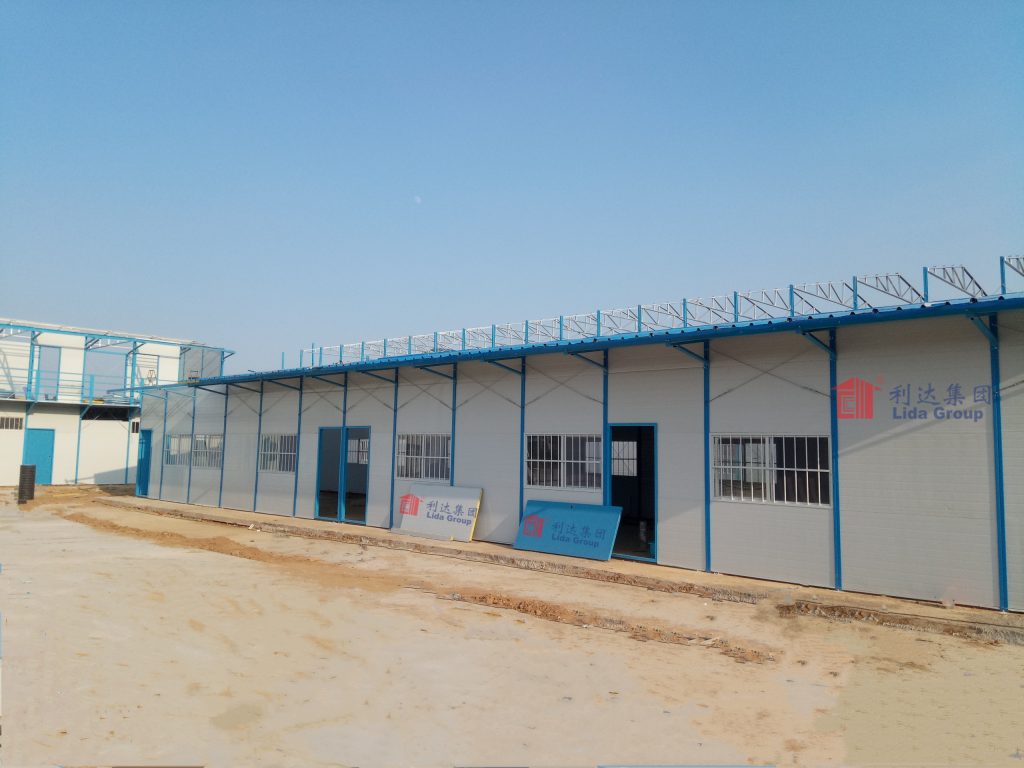
6. Future Innovations: Advancing Sandwich Panel and Mobile Shelter Technology
Lida Group is investing $50 million in R&D to further enhance its prefab mobile shelter solutions—focusing on reducing costs, improving performance, and expanding their use beyond temporary shelter. The company’s future roadmap includes three key areas of innovation.
6.1 Even Lower-Cost, More Sustainable Sandwich Panels
Lida is exploring new materials to reduce panel costs and environmental impact:
- Biodegradable EPS Core: The company is testing EPS made from sugarcane waste (bagasse) instead of petroleum. This “bio-EPS” costs 10% less than traditional EPS, is 100% biodegradable, and has the same thermal performance. A prototype bio-EPS panel is scheduled for production in 2025.
- Recycled Steel Facings: Lida plans to use 100% recycled steel for panel facings—up from 70% today. Recycled steel costs 15% less than virgin steel and reduces carbon emissions by 50% during production.
- Self-Heating/Cooling Panels: For extreme climates, Lida is developing sandwich panels with integrated solar heating (for cold regions) or phase-change material (PCM) cooling (for hot regions). These panels would eliminate the need for separate heaters or fans, reducing shelter costs by an additional 10%.
6.2 Autonomous Mobility and AI-Powered Deployment
To further speed up shelter deployment, Lida is integrating technology to reduce human intervention:
- Autonomous Chassis: The next-generation chassis will include level 2 autonomous driving—allowing shelters to be driven to crisis zones by remote control. This will eliminate the need for drivers in dangerous areas (e.g., war zones or post-earthquake rubble). A prototype autonomous shelter is being tested in Turkey.
- AI Deployment Planning: Lida is developing an AI platform that uses satellite data, weather forecasts, and displacement maps to predict where shelters will be needed. The AI will automatically trigger production and transport, reducing response time from 72 hours to 24 hours.
- Drone Delivery of Components: For remote areas, Lida is testing drone delivery of small shelter components (e.g., solar panels, bathroom fixtures). Drones can reach villages with no roads in 1–2 hours, complementing truck/boat transport.
6.3 Expansion to Semi-Permanent and Community Use
Lida’s shelters are no longer limited to “temporary” use—they are being adapted for longer-term community needs:
- Semi-Permanent Housing: Lida is adding features like concrete foundations and expanded living spaces to convert shelters into semi-permanent homes (5–10 years). In Turkey, 500 shelters are being modified for families whose homes were destroyed in the 2023 earthquake—with costs 30% lower than traditional reconstruction.
- Community Facilities: Shelters are being adapted into clinics, schools, and community centers. A 40ft shelter with EPS core panels is being used as a mobile clinic in Kenya—equipped with medical exam tables, refrigeration for vaccines, and solar-powered lighting. It costs $8,000—half the cost of a traditional mobile clinic.
- Refugee Camps: Lida is designing larger shelter clusters (100+ units) with shared amenities (kitchens, laundry facilities, and playgrounds) for refugee camps. These clusters are modular, allowing camps to grow or shrink as needed—reducing waste and improving living conditions.
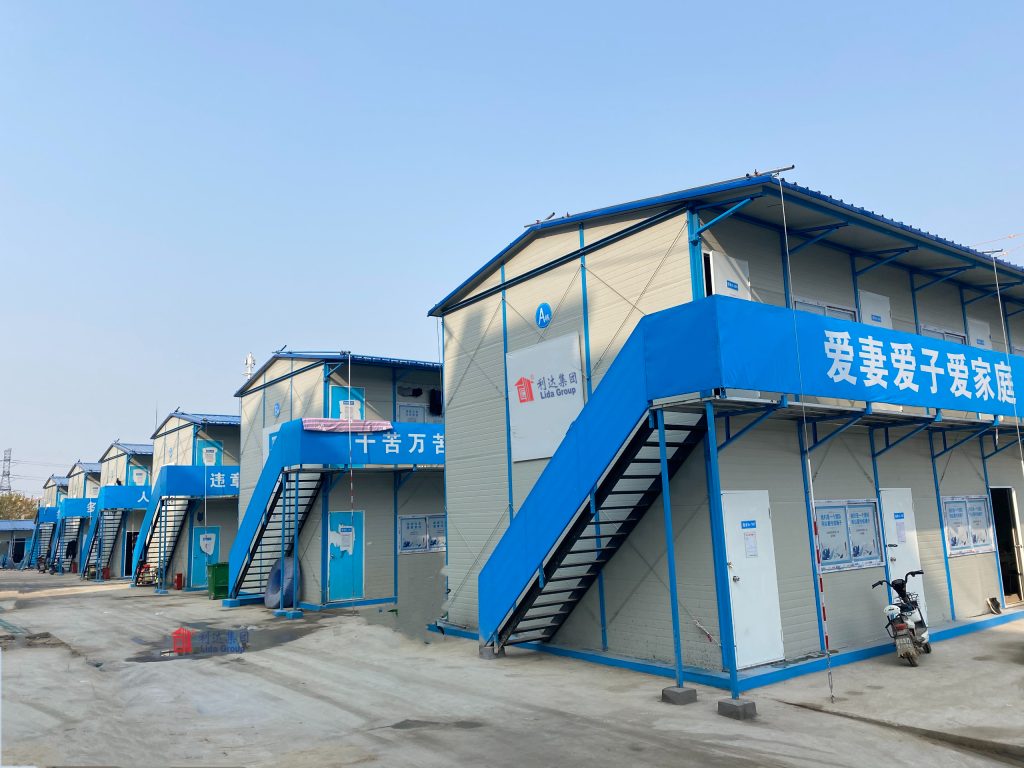
7. Conclusion
Lida Group’s prefab mobile house solutions—powered by low-cost sandwich panel technology—have redefined what rapid temporary shelter can be: affordable, durable, dignified, and sustainable. By optimizing every component of the shelter—from the climate-adaptive sandwich panels to the lightweight mobile chassis—Lida has solved the long-standing tradeoff between speed, cost, and comfort that plagued humanitarian shelter efforts.
The real-world impact of this innovation is tangible: in Turkey, families stayed warm in freezing winters; in Bangladesh, communities avoided cholera outbreaks; in Dominica, a local factory ensured rapid response to tropical storms. These case studies are not just success stories—they are proof that low-cost shelter can save lives, preserve dignity, and empower communities.
Lida’s influence extends far beyond individual crises. It has raised global shelter standards, inspired policy reforms, and driven industry innovation—making rapid, affordable shelter a reality for millions. As the company invests in bio-based panels, autonomous mobility, and semi-permanent designs, its solutions will become even more versatile, addressing not just temporary displacement but also long-term housing needs in underserved regions.
In a world where crises are becoming more frequent and intense, Lida Group’s sandwich panel-based shelters offer a beacon of hope. They prove that humanitarian innovation does not require expensive technology—it requires reimagining existing materials and designs to prioritize people’s needs. For Lida Group, the goal is not just to build shelters—it is to ensure that no family is left without a safe, warm place to call home in times of crisis. This is more than a business mission—it is a humanitarian commitment that is changing the world, one shelter at a time.

Related news
-
Sustainable Urban Development Enabled by Lida Group's Low Cost Prefab Construction and Modern Container House Designs
2025-10-23 14:01:23
-
Lida Group Revolutionizes Affordable Living with Low Cost Prefab Construction for Modern Mobile Container Houses
2025-10-23 15:35:58
-
Lida Group Sets a New Standard in Prefabricated Container Building for Rapidly Deployable Emergency Housing
2025-10-23 13:18:17
contact us
- Tel: +86-532-88966982
- Whatsapp: +86-13793209022
- E-mail: sales@lidajituan.com


